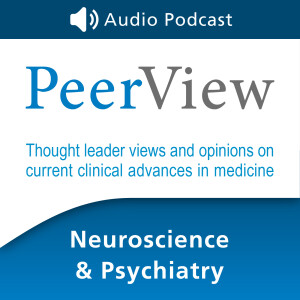
Stephen P. Salloway, MD, MS - Case by Case: Actioning Patient-Centered Strategies for Risk Assessment, Diagnosis, and Management of Amyloid-Related Imaging Abnormalities (ARIA)
 2023-08-24
2023-08-24
Download
Right click and do "save link as"
Go online to PeerView.com/QVT860 to view the activity, download slides and practice aids, and complete the post-test to earn credit. Alzheimer’s disease (AD) is a devastating and highly prevalent condition, affecting 10% of people over 65 years of age and increasing as the population ages. After almost two decades without a new AD treatment, recent advances in disease-modifying therapies—including the accelerated FDA approval of two amyloid-targeting therapies (ATTs) and a third in late-stage development—have introduced the possibility of slowed disease progression and improved patient outcomes. Furthermore, significant advances have been made in identifying and testing biomarkers for AD that may aid in early diagnosis, proper treatment selection, and assessment of therapeutic response. The latter is increasingly important given the need to monitor for amyloid-related imaging abnormalities (ARIA) in patients being prescribed ATTs for mild cognitive impairment due to AD or mild AD dementia. With the rapid developments in AD assessment and treatment, it is vitally important to increase awareness of ARIA among healthcare providers. In this activity, based on a recent live symposium, AD experts pair compelling, real-world case scenarios with practice-changing evidence to illustrate how to select patients for treatment with ATTs, how to discuss the risk of ARIA with patients, and how to monitor, recognize, and manage ARIA in patients once they start treatment. Upon completion of this activity, participants should be better able to: Select appropriate patients for treatment with amyloid-targeting therapies (ATTs); Appropriately monitor for and manage amyloid-related imaging abnormalities (ARIA) in patients taking ATTs for the treatment of early-stage Alzheimer’s disease (AD); and Implement effective communication strategies to educate patients and caregivers about ARIA.
view more
More Episodes
01234567
Create your
podcast in
minutes
- Full-featured podcast site
- Unlimited storage and bandwidth
- Comprehensive podcast stats
- Distribute to Apple Podcasts, Spotify, and more
- Make money with your podcast
It is Free
- Privacy Policy
- Cookie Policy
- Terms of Use
- Consent Preferences
- Copyright © 2015-2024 Podbean.com





